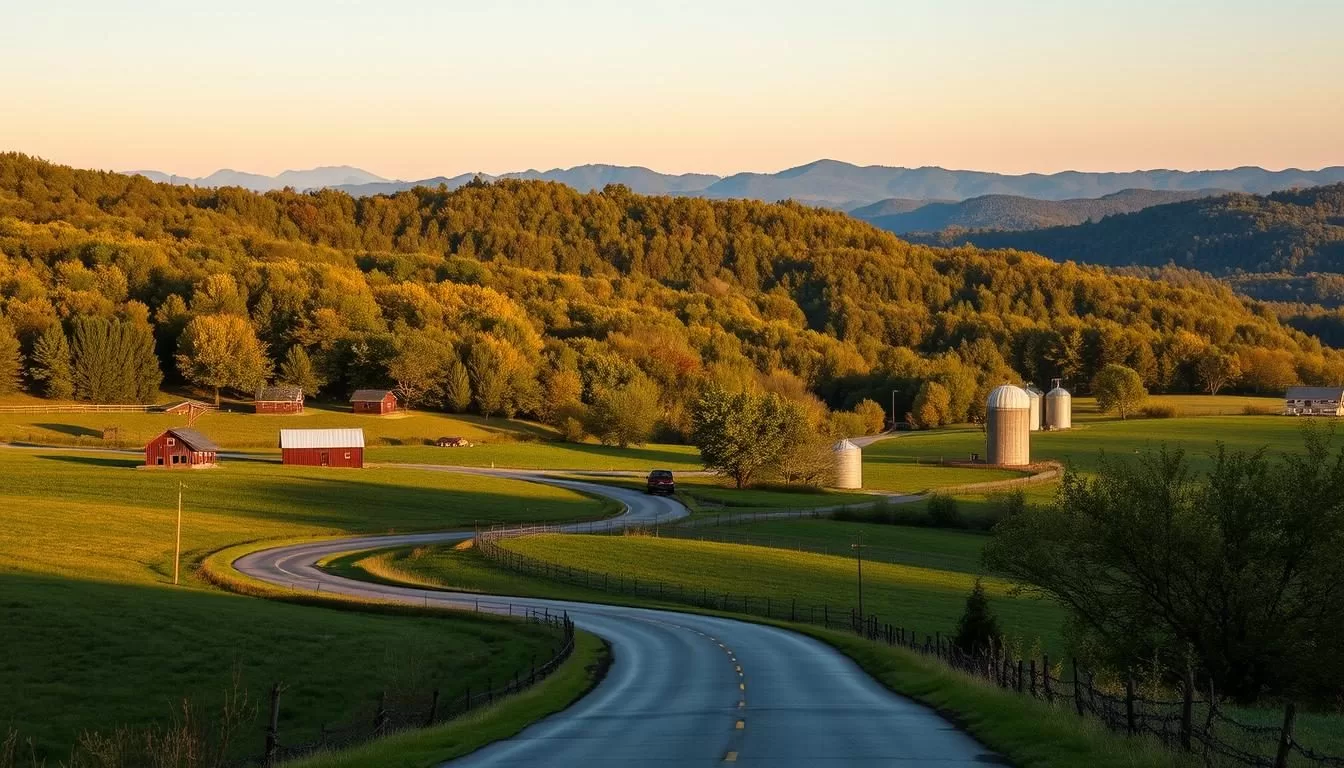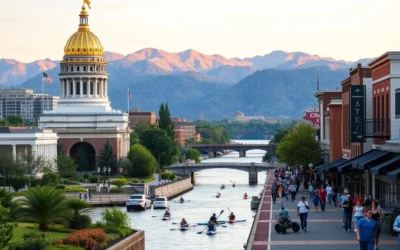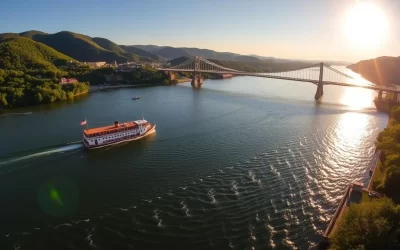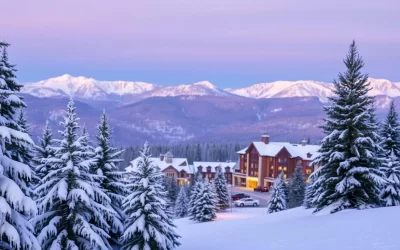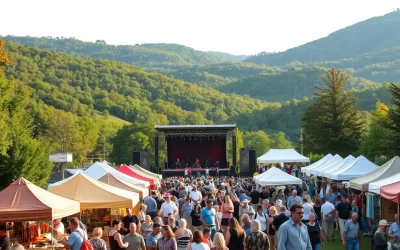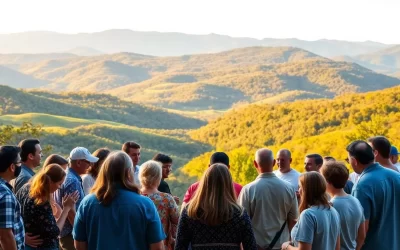Many travelers wonder when is the best time to visit West Virginia. The answer depends on your preferences and what you want to experience. The state’s diverse climate means that the weather varies significantly across different regions.
The Appalachian Mountains play a crucial role in shaping local climate patterns, offering distinct seasonal experiences. From vibrant spring blooms to summer adventures, spectacular fall foliage, and winter snow sports, each season has its unique charm.
Understanding the state’s climate patterns is key to a weather-savvy trip. This guide will help you determine the ideal time to visit based on your interests and preferences, ensuring you make the most of your journey to this beautiful state.
Understanding West Virginia’s Climate Patterns
To plan a weather-savvy trip to West Virginia, it’s essential to understand its climate patterns. West Virginia’s diverse geography significantly influences its climate, resulting in varied weather conditions across different regions.
Geographic Influences on Weather
The state’s terrain, which includes mountains and valleys, plays a crucial role in shaping its climate. Mountainous regions tend to be cooler and receive more snowfall compared to the lower-lying areas. This variation in geography means that weather conditions can differ significantly across West Virginia.
Year-Round Temperature and Precipitation Overview
West Virginia experiences a range of temperatures throughout the year. Winters are cold, with temperatures ranging from the 20s to 40s Fahrenheit, while summers are warm, reaching the 70s and mid-80s Fahrenheit. The state receives an average annual rainfall of 40-45 inches, with precipitation relatively evenly distributed throughout the year. May is typically the rainiest month, with an average of around 3 inches of precipitation.
Spring in West Virginia: Nature’s Awakening
Spring in West Virginia is a season of renewal, offering a mix of pleasant weather and exciting events. As the winter chill dissipates, the state transforms into a vibrant landscape, ready for exploration.
Weather Conditions from March to May
During spring, West Virginia experiences mild temperatures, with averages ranging from 50°F to 70°F. March can be quite unpredictable, with occasional cold snaps, while May is generally warm and sunny. This period is ideal for outdoor activities as the weather is generally favorable.
Spring Outdoor Activities and Attractions
Spring is an excellent time to enjoy the outdoors in West Virginia. You can visit the Blackwater Falls State Park for hiking and nature walks. The park’s diverse flora is particularly striking during spring.
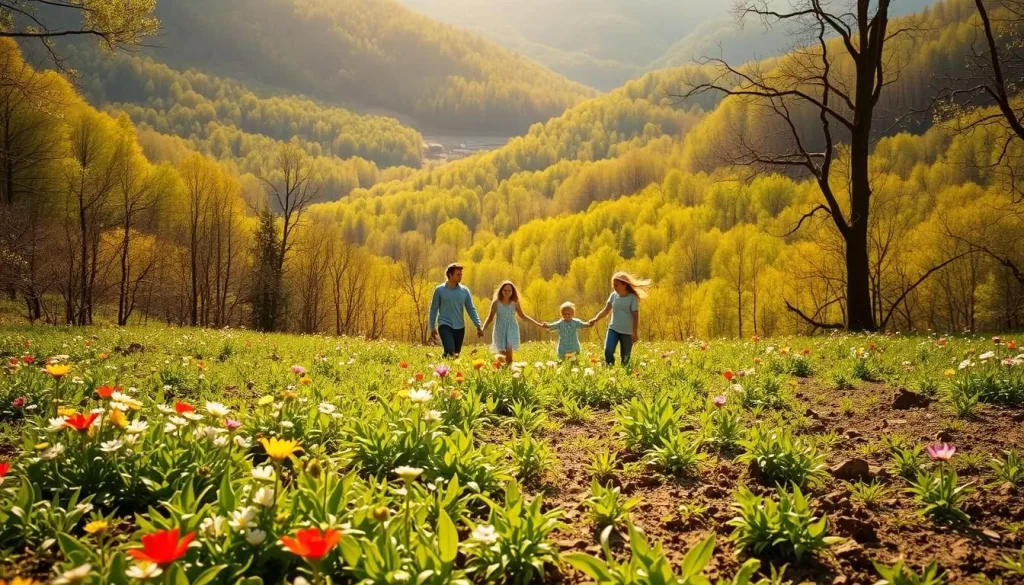
Spring Festivals and Events Worth Attending
West Virginia hosts various festivals in spring. Some notable events include:
- The West Virginia Wildflower Pilgrimage at Blackwater Falls State Park in May, which celebrates the state’s flora with guided walks and workshops.
- The Annual Ramps & Rail Festival in Elkins during April, featuring food, music, and train rides.
- The Martinsburg Wine Fest in May, showcasing local wineries.
- Charleston’s FestivALL Spring in April, with performances in visual arts, music, theater, and dance.
- The West Virginia Strawberry Festival in Buckhannon, a tradition since 1936, featuring parades and strawberry treats.
These events make spring a fun time to visit West Virginia and experience its festival atmosphere.
Summer Adventures in the Mountain State
As summer unfolds, West Virginia transforms into a vibrant playground for outdoor enthusiasts and culture lovers alike. The warm weather brings a host of activities and events that make the state an ideal destination during these months.
June to August Weather Expectations
Summer in West Virginia is characterized by warm temperatures, with average highs in the 80s (°F) across the state. You can expect some humidity, but the mountainous regions tend to be cooler than the lower-lying areas.
Water Recreation and Hiking Opportunities
The summer season is perfect for water recreation and hiking. With numerous lakes, rivers, and trails, you can enjoy activities like kayaking, rafting, or simply taking a leisurely hike through the beautiful landscapes.
Summer Cultural Events and Festivals
Summer is a great time to experience West Virginia’s culture through its various festivals and events. Some highlights include:
- The Mountain State Art & Craft Fair in Ripley, showcasing Appalachian crafts and music.
- The West Virginia State Fair in Lewisburg, featuring agricultural exhibitions and concerts.
- Music festivals like the Augusta Heritage Festival, celebrating traditional music forms.
| Event | Location | Month |
|---|---|---|
| Mountain State Art & Craft Fair | Ripley | July |
| West Virginia State Fair | Lewisburg | August |
| Augusta Heritage Festival | Elkins | Summer |
Fall Foliage and Harvest Season
You can experience the best of West Virginia’s autumn during the fall foliage and harvest season. The state’s natural beauty is on full display as the leaves change colors, creating a picturesque landscape.
September to November Weather Patterns
During September to November, West Virginia experiences mild temperatures, with average highs ranging from 64°F to 75°F. The weather is generally pleasant, making it ideal for outdoor activities.
Best Spots for Fall Foliage Viewing
Some of the best spots for fall foliage viewing include the West Virginia Mountain Heritage Arts & Crafts Trail, which showcases the state’s natural beauty and local culture. Other popular destinations include the Appalachian Mountains and scenic drives along the state’s many byways.
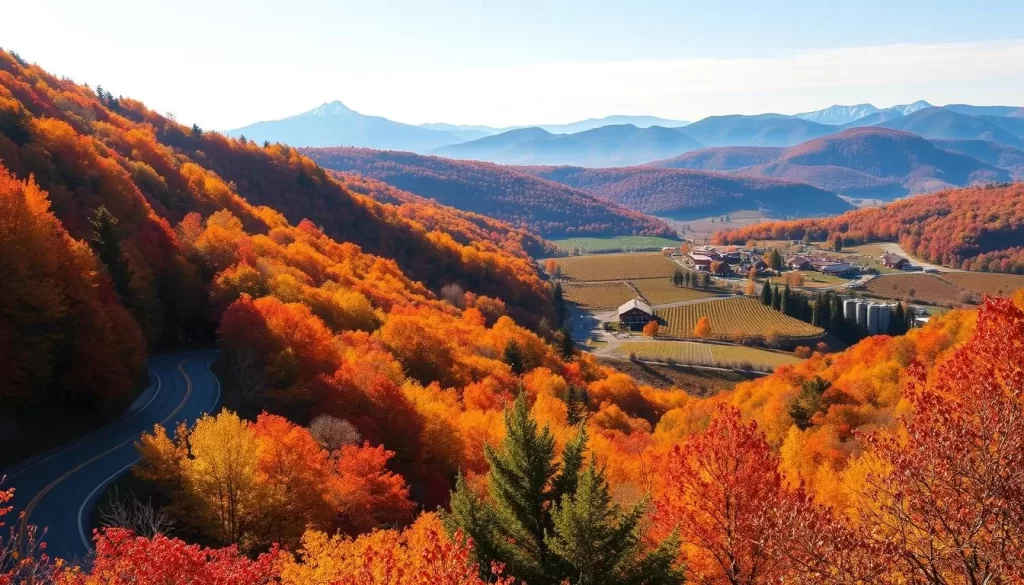
Harvest Festivals and Autumn Activities
West Virginia hosts various harvest festivals and autumn activities. The Mountain State Forest Festival in Elkins celebrates the state’s forestry heritage, while apple harvest celebrations and pumpkin festivals take place throughout the state. You can enjoy fun activities like cider pressing, apple butter making, and orchard tours.
| Event | Location | Time |
|---|---|---|
| Mountain State Forest Festival | Elkins | Early October |
| Apple Harvest Celebrations | Eastern Panhandle | September to November |
| Bridge Day Festival | New River Gorge | October |
Winter in West Virginia: Snow Sports and Cozy Retreats
Winter in West Virginia is a treat for those who enjoy snow sports, holiday festivities, and relaxing in cozy cabins. You can enjoy a luxury winter cabin with a stone fireplace, perfect for a holiday season getaway.
December to February Weather Conditions
From December to February, West Virginia experiences cold weather, with snowfall being a regular occurrence. Temperatures can drop significantly, making it ideal for winter sports.
Skiing and Winter Sports Destinations
The state is home to several ski resorts, including Snowshoe Mountain and Canaan Valley Resort, offering a range of skiing and snowboarding opportunities. You can also enjoy snow tubing, ice skating, and other winter activities.
Holiday Season Celebrations and Indoor Attractions
During the holiday season, West Virginia’s historic downtown areas, such as Lewisburg and Shepherdstown, are adorned with festive decorations. You can visit attractions like the Clay Center for the Arts & Sciences or explore the state’s craft beverage scene.
| Attraction | Location | Description |
|---|---|---|
| Winter Festival of Lights | Oglebay Resort | Over 90 illuminated displays across 300 acres |
| The Greenbrier Resort’s Christmas Celebrations | The Greenbrier | Elaborate decorations, special dining, and holiday activities |
| Clay Center for the Arts & Sciences | Charleston | Cultural experiences during inclement weather |
West Virginia, United States: Best Months for a Weather-Savvy Trip
West Virginia’s diverse climate means that the best time to visit depends on your preferences for weather and activities. The state’s varied landscape offers something for everyone, regardless of the season.
Optimal Months for Mild Weather
The months of May, June, September, and October are considered ideal for those seeking mild weather. During these periods, temperatures are comfortable, making them perfect for outdoor activities like hiking and exploring the natural beauty of West Virginia.
Balancing Weather Preferences with Activity Plans
Different activities are best suited for different times of the year. For instance, if you’re interested in water sports, July and August offer the warmest temperatures. On the other hand, if you’re looking for a winter sports adventure, December to February is the best time. Here’s a summary of the best times for various activities:
| Activity | Best Time |
|---|---|
| Water Sports | July, August |
| Hiking | May, June, September, October |
| Winter Sports | December, January, February |
| Photography (Fall Foliage) | October |
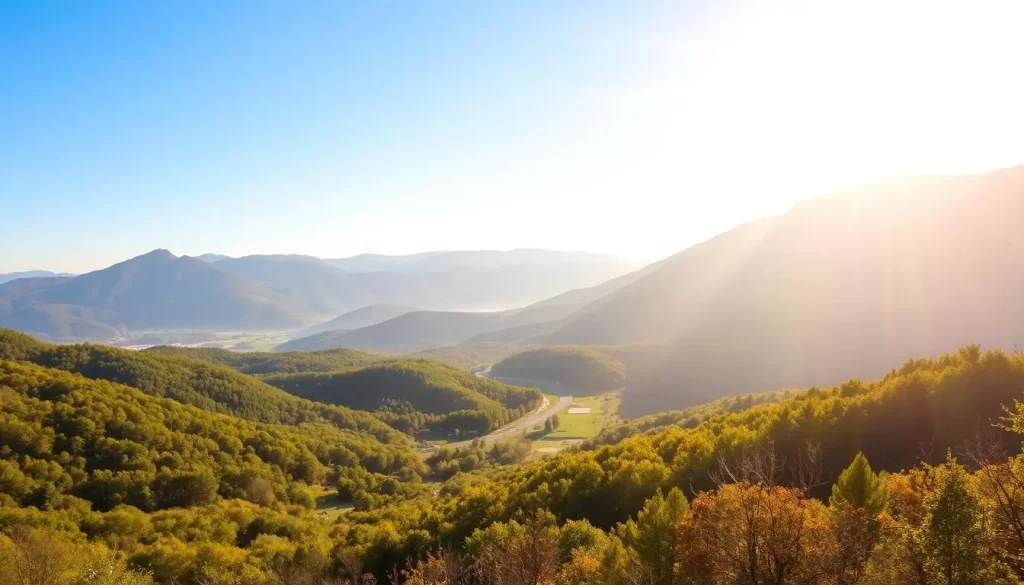
Avoiding Crowds: Off-Peak Travel Seasons
If you’re looking to escape the crowds, consider visiting West Virginia during its less busy periods. The state’s off-peak travel seasons offer numerous benefits for travelers seeking a more relaxed experience.
Shoulder Season Benefits
The shoulder season, which typically includes the periods between peak and off-peak seasons, offers better accommodation rates and a more serene environment. Some properties discount rooms by 20-30% compared to summer prices, making it an economical choice for travelers.
Accommodation and Attraction Availability
During off-peak times, you can enjoy various attractions and activities with more ease. Many attractions maintain their regular hours year-round, although some smaller sites may have reduced schedules in winter. You can expect:
- Less crowded state parks and recreational areas, ideal for a more immersive nature experience.
- Easier access to restaurants in tourist areas without needing reservations.
- More personalized experiences from guided tours and outdoor adventure companies due to fewer tourists.
Weather-Based Packing Guide for West Virginia
Preparing for your West Virginia adventure involves more than just choosing the right time to visit; it also means packing the right gear for the weather. The state’s diverse climate, influenced by its geography, requires a thoughtful approach to packing.
Essential Items for Each Season
Understanding the seasonal weather patterns in West Virginia is crucial for packing appropriately. For instance, spring and fall are known for mild temperatures, but can also bring unexpected rain showers. In contrast, summer days can be warm, while evenings, especially in higher elevations, can be cool.
- For spring and fall, pack layers that can be easily added or removed.
- Summer requires light, breathable clothing, but also consider packing a light sweater for cooler evenings.
- Winter demands warm, insulating clothing, including a waterproof outer layer.
Layering Strategies for Mountain Climate
A key to dressing for West Virginia’s variable mountain climate is layering. This involves a moisture-wicking base layer, an insulating mid-layer, and a waterproof/windproof outer layer. Such a system allows you to adjust your clothing according to the temperature and weather conditions.
| Layer | Purpose | Recommended Material |
|---|---|---|
| Base Layer | Moisture-wicking | Synthetic or Merino Wool |
| Mid-Layer | Insulation | Fleece or Down |
| Outer Layer | Waterproof/Windproof | Water-resistant materials like Gore-Tex |
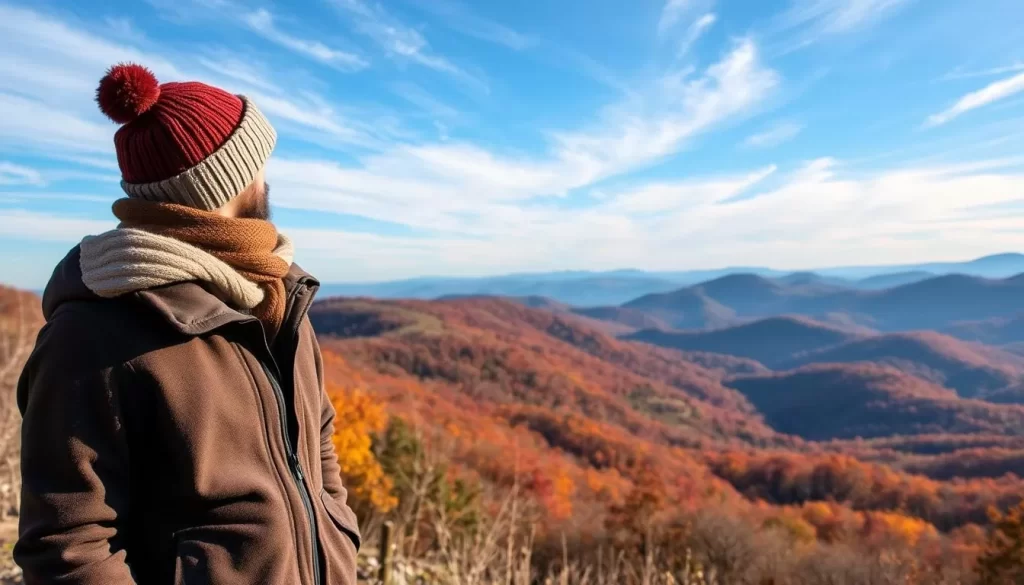
Weather Contingency Planning for Your Trip
West Virginia’s diverse climate means you should always have a backup plan for your outdoor activities. Checking the weather before you go ensures you’re prepared for any conditions that might impact your travel plans.
Having a flexible itinerary allows you to make the most of your time in West Virginia. Understanding the weather patterns and having indoor alternatives can save you from disappointment on rainy days.
Indoor Alternatives for Rainy Days
On rainy days, consider visiting the many indoor attractions West Virginia has to offer. You can explore museums, visit historic homes, or enjoy things to do like shopping or dining in a cozy café.
Monitoring Weather Forecasts and Alerts
Staying informed about the weather is crucial. The National Weather Service provides detailed forecasts for specific regions of West Virginia. Use mobile apps that offer real-time weather radar to track approaching storms and adjust your plans accordingly.
Conclusion: Making the Most of West Virginia’s Seasonal Charms
The Mountain State’s changing seasons provide a unique backdrop for your adventures and explorations. West Virginia truly offers year-round appeal, with each season showcasing different aspects of the state’s natural beauty and cultural heritage.
From spring’s wildflower displays and rushing waterfalls to summer’s abundant outdoor recreation, fall’s spectacular foliage, and winter’s snow-covered playground, every season offers a distinct experience. By planning around typical weather patterns, you can maximize your enjoyment of West Virginia’s outdoor treasures while having contingency plans for inclement days.
Whether you’re seeking adventure sports, cultural immersion, or a peaceful retreat in nature, West Virginia’s diverse regions and seasons provide endless possibilities for memorable experiences. Regardless of when you visit, the state’s legendary hospitality ensures a warm welcome in any weather condition, making West Virginia a great destination at any time of the year.
The above is subject to change.
Check back often to TRAVEL.COM for the latest travel tips and deals.
Here are some Tours & Sightseeing suggestions that might pique your interests!
